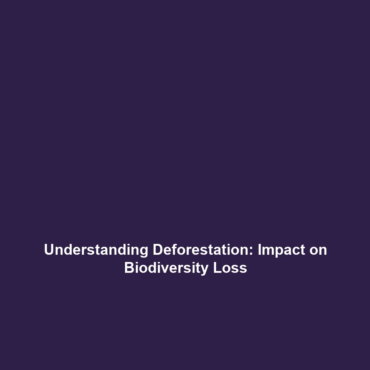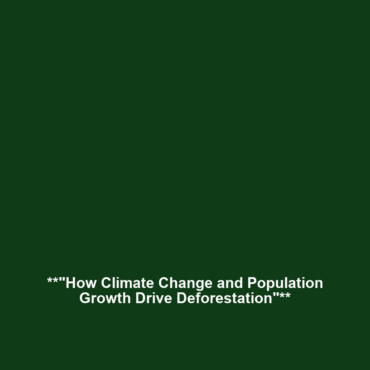<>
Introduction to Deforestation and Biodiversity Loss
Deforestation and biodiversity loss are urgent issues facing our planet, with significant implications for ecosystem health and human survival. Understanding these concepts is crucial as they directly affect climate change, habitat destruction, and the survival of countless species. As we delve into the intricate relationships between deforestation and biodiversity loss, we will uncover how these phenomena shape our biological diversity and the environment at large.
Key Concepts
Understanding Deforestation
Deforestation refers to the large-scale removal of forests, impacting the myriad species that rely on these habitats. Key drivers include agriculture, logging, and urbanization. Deforestation contributes to biodiversity loss by destroying the ecosystems that sustain various forms of life.
The Role of Biodiversity
Biodiversity encompasses the variety of life on Earth and is essential for ecosystem stability. Healthy ecosystems provide vital services, including air and water purification, pollination, and carbon storage. The loss of biodiversity disrupts these processes, creating an imbalance that can lead to ecosystem collapse.
Applications and Real-World Uses
The implications of understanding deforestation and biodiversity loss extend to several practical applications, such as:
- Conservation Strategies: How conservation efforts are developed to combat deforestation and promote biodiversity.
- Ecotourism: Utilizing biodiversity as an asset to create sustainable tourism that encourages environmental stewardship.
- Land Management: Implementing practices that minimize deforestation and support biodiversity.
Current Challenges
Several challenges and limitations hinder the effective management of deforestation and biodiversity loss:
- Insufficient data on species populations and diversity.
- The cost of implementing conservation programs.
- Conflicting interests between economic development and environmental protection.
Future Research and Innovations
Future innovations are vital for addressing the complexities of deforestation and biodiversity loss, including:
- Remote Sensing Technologies: Improving monitoring of deforestation activities through satellite imagery.
- Genetic Research: Studying the genetic diversity of species to enhance conservation efforts.
- Policy Innovations: Developing more effective environmental policies that incorporate scientific understanding.
Conclusion
Understanding the intricate links between deforestation and biodiversity loss is crucial for the health of our planet. As we explore real-world applications, navigate existing challenges, and look towards future research, it is evident that proactive measures are essential to preserve our ecosystems. For further reading on related topics, visit our pages on Biodiversity Conservation and Environmental Impacts of Deforestation.









